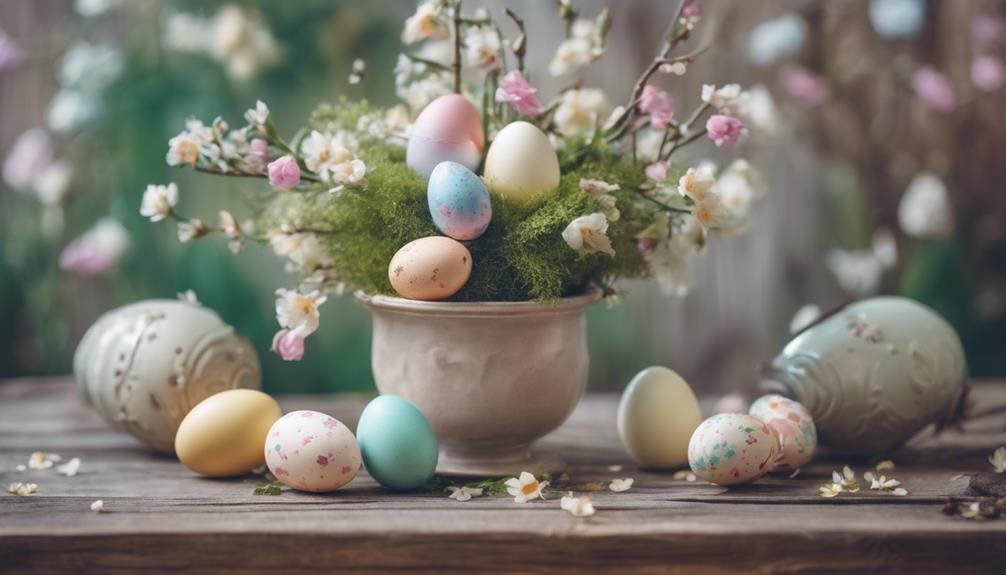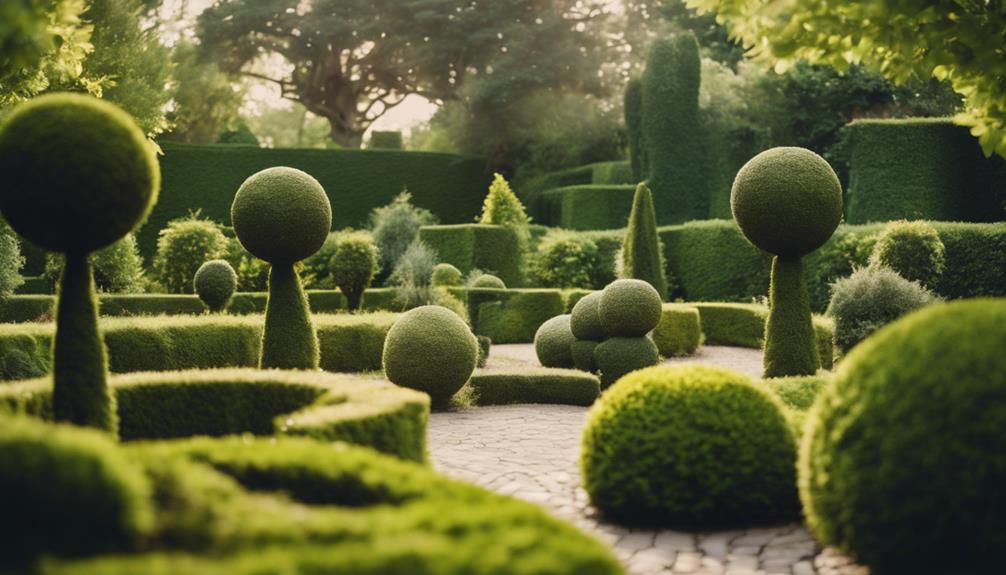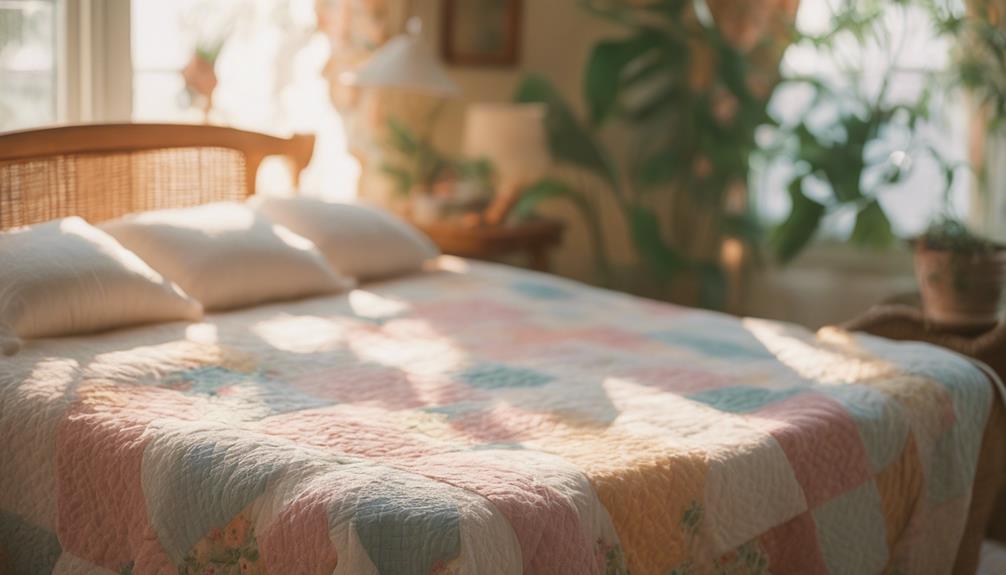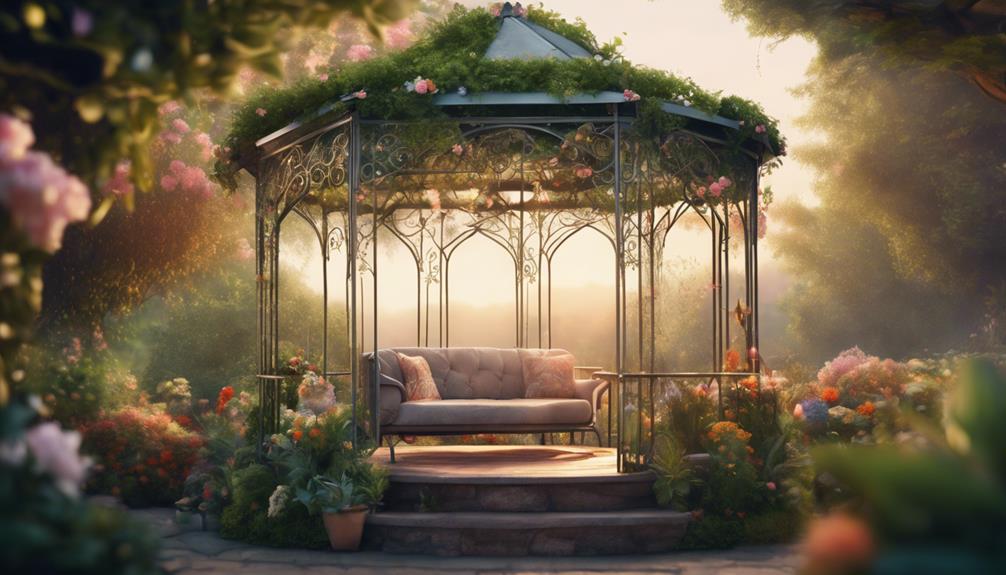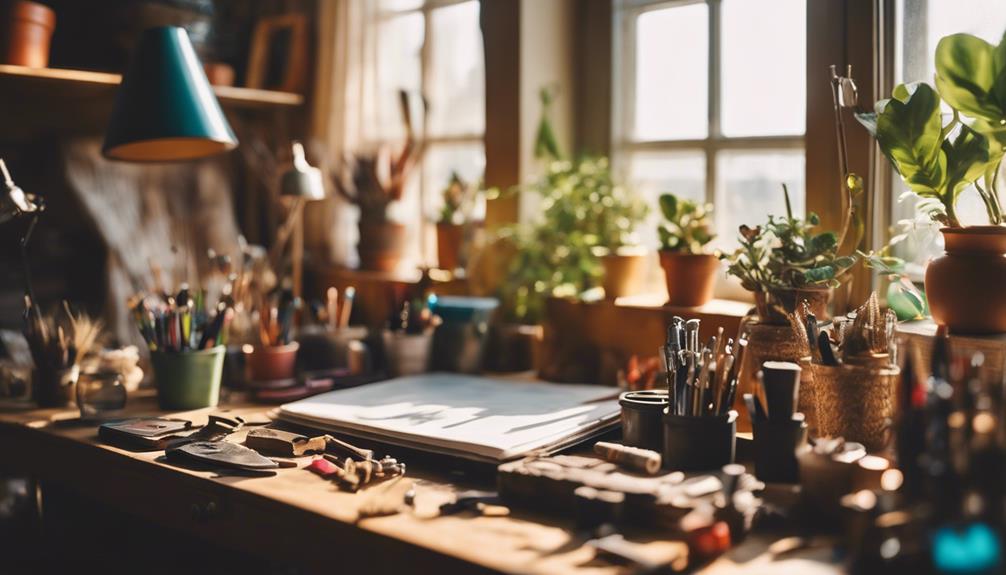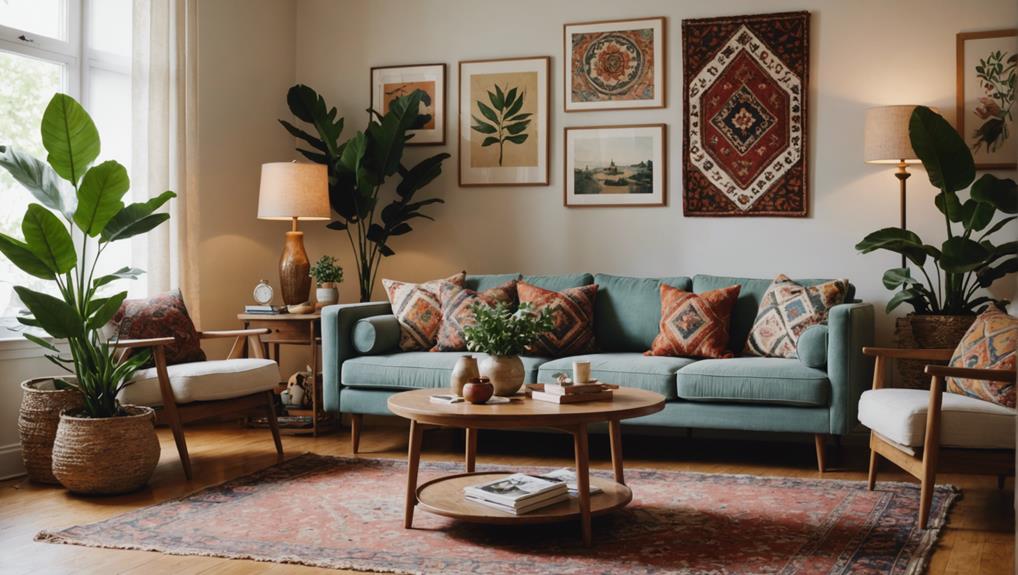We're about to create a stunning Easter egg tree, and it starts with gathering essential supplies like foam eggs, decorative napkins, a craft brush, Mod Podge glue, white acrylic paint, and scissors. Next, we'll decoupage our eggs with napkin designs, applying a thin layer of Mod Podge glue and smoothing out wrinkles for a clean finish. After assembling our egg tree on a floral cone with hot glue, we'll fill gaps with moss and adjust egg sizes for a balanced display. With these steps, we'll create a unique Easter egg tree that reflects our personal style – and there's more to discover to make sure our creative vision comes to life.
Key Takeaways
• Use foam Easter eggs as the base for decoupage design and decorate with napkins and Mod Podge glue for a unique look.
• Apply thin layers of Mod Podge glue to secure napkin designs and avoid wrinkles and bubbles.
• Assemble decoupaged eggs on a floral cone to create a stunning Easter egg tree, using hot glue for stability.
• Fill gaps with moss or excelsior for a lush appearance and mix decoupaged and non-decoupaged eggs for a unique display.
• Showcase decorated eggs in a decorative basket or egg holder, protecting them from direct sunlight and storing them carefully.
Gathering Essential Supplies
We'll start by collecting the necessary materials for our Easter egg tree project. To begin, we'll need foam Easter eggs, which will serve as the base for our decoupage design.
Next, we'll select decorative napkins featuring patterns or images that we want to feature on our eggs. A craft brush will come in handy for applying the Mod Podge glue, an important step in the decoupage process.
Speaking of Mod Podge glue, make sure to have a sufficient supply on hand. Additionally, we'll need scissors and white acrylic paint for any additional customization we might want to undertake.
Before we begin, let's prepare our work area by covering it with a protective layer to avoid any mess. According to crafting experts, 'a clean and organized workspace is essential for a successful project.'
With our materials gathered and our workspace prepared, we're ready to move on to the next step: decoupaging our Easter eggs with napkins.
Decoupaging Easter Eggs With Napkins
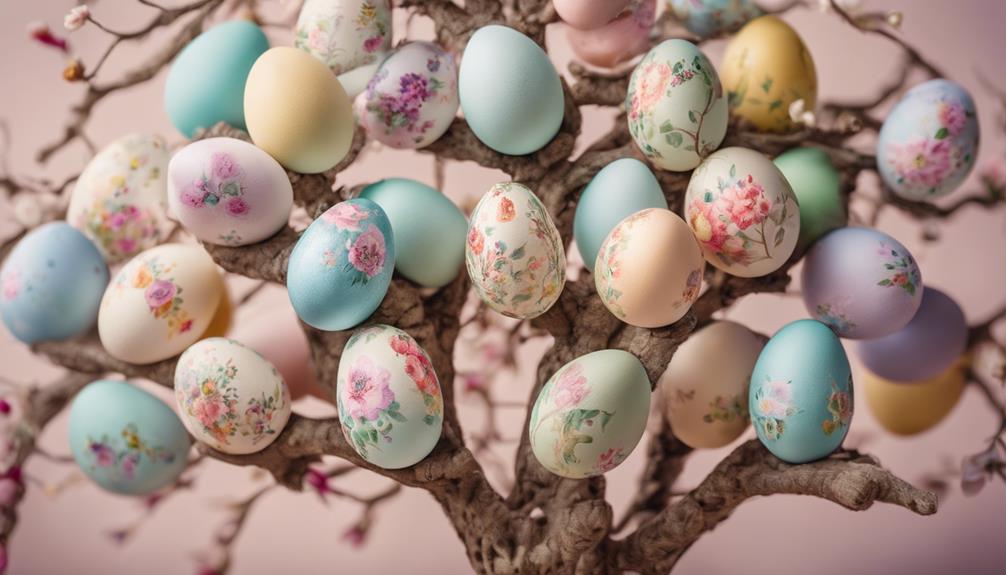
With our workspace prepared and materials at the ready, let's immerse ourselves in decoupaging our Easter eggs with napkins, a process that adds a unique and personalized touch to our project.
We'll begin by cutting out designs from decorative napkins, carefully selecting motifs that fit the shape of our eggs for a seamless look. Next, we'll apply a thin layer of Mod Podge glue to secure the napkin designs to the eggs.
As we smooth out any wrinkles or bubbles, we'll guarantee a clean finish on our decoupaged eggs. To seal the napkin designs and protect them from wear and tear, we'll apply additional coats of Mod Podge glue.
This won't only preserve the delicate designs but also enhance the overall decor of our Easter egg tree. By incorporating napkins into our decoupage projects, we'll create one-of-a-kind eggs that reflect our personal style and add a touch of elegance to our decor.
As we work on our eggs, we'll discover the endless possibilities of decoupage and the unique charm it brings to our Easter celebration.
Building the Easter Egg Tree
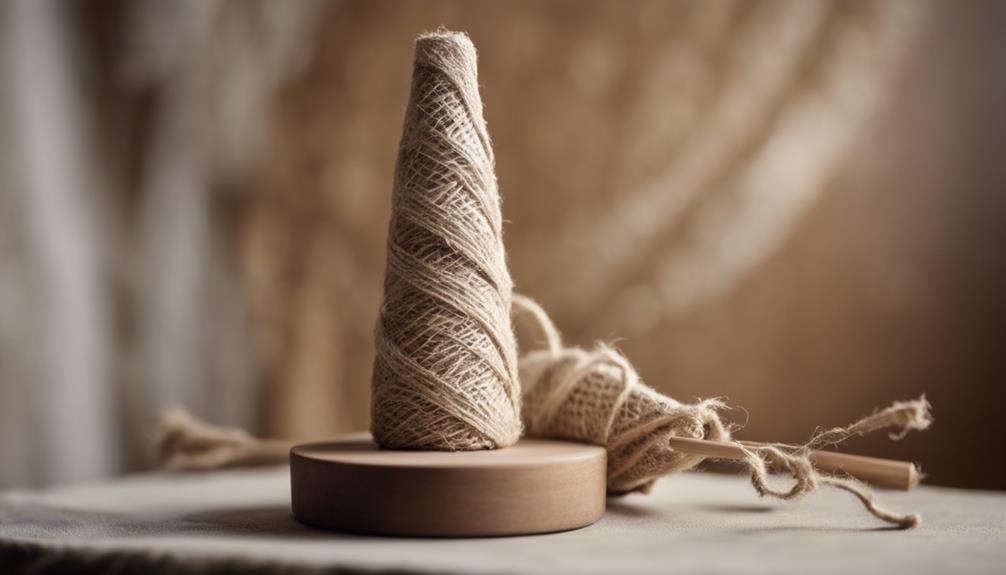
We're ready to bring our Easter egg tree to life by assembling the eggs on the floral cone, starting from the bottom and working our way up. To guarantee stability, we'll use hot glue generously to attach the eggs to the cone.
As we add each egg, we'll fill in any gaps with moss or excelsior to create a lush, full appearance. To add visual interest, we'll use a variety of egg sizes, mixing decoupaged and non-decoupaged eggs for a unique display. This will create a dynamic, layered look that showcases our decoupage skills.
As we work our way up the cone, we'll adjust the egg sizes and spacing to create a balanced, symmetrical tree. With each egg securely attached and the gaps filled in, our Easter Egg Tree will start to take shape.
Displaying Your Decorated Eggs

Now that our Easter egg tree is complete, let's showcase our beautifully decorated eggs in a decorative basket or egg holder to create a stunning display. This will add a personal touch to our Easter decor and make our decoupaged Easter egg tree a focal point in our home.
Here are some tips to keep in mind when displaying our decorated eggs:
- Protect from direct sunlight: Avoid placing the eggs in direct sunlight or high heat to prevent damage to the decoupage.
- Store with care: Store our decorated eggs carefully to maintain their beauty and protect them from potential harm.
- Consider gifting: Think about gifting our decoupaged eggs to friends and family as unique and personalized Easter gifts.
- Enjoy the festive touch: Take pleasure in the festive and personalized touch that our decoupaged Easter egg tree brings to our Easter celebrations.
Tips for a Successful Project

By following a few key guidelines, we can guarantee our Easter egg tree turns out beautifully and becomes a treasured part of our holiday decor. When decoupaging Easter eggs, it's crucial to use a thin layer of glue to avoid wrinkles and achieve a smooth finish.
We can experiment with different colors and patterns to create a unique and personalized egg tree that reflects our style. To achieve intricate designs, we should use smaller, detailed patterns that add visual appeal to the eggs. When applying Mod Podge, we must allow each layer to dry completely before adding additional layers for a professional finish.
Using a glue gun can help us achieve a smooth, even application of the decoupage glue. Finally, consider adding a final coat of Mod Podge to seal and protect the decorated eggs for long-lasting durability. By following these tips, we can create a stunning Easter egg tree that becomes a cherished part of our holiday traditions.
Frequently Asked Questions
How to Make Eggs for an Easter Tree?
"We're making eggs for an Easter tree by painting foam eggs white, then attaching decorative napkin designs with Mod Podge glue, adding coats for protection and a glossy finish – it's a fun, creative process!"
How to Dry Decoupage Eggs?
We let our decoupaged eggs air dry on a flat surface, avoiding touch or movement until the medium sets, ensuring proper ventilation to speed up the process and checking for any remaining wet spots before handling.
How Do You Decoupage an Easter Egg?
"We delicately dip our designs in decoupage glue, carefully crafting cute cut-outs to beautifully bedeck our Easter eggs, ensuring a flawless finish with finesse."
Can I Use Mod Podge on Eggs?
We're happy to report that yes, we can use Mod Podge on eggs, and it works beautifully, providing a strong bond and durable finish, making it perfect for our decoupaging projects!
Conclusion
As we step back to admire our handiwork, our Easter egg tree stands tall, a vibrant spectacle of color and creativity, a true masterpiece born from humble napkins and eggs.
The decoupaged eggs sparkle like jewels, suspended in mid-air like a whimsical forest of Easter magic.
We've created a showstopping centerpiece that will rival any store-bought decoration, a proof of the power of imagination and DIY ingenuity.
